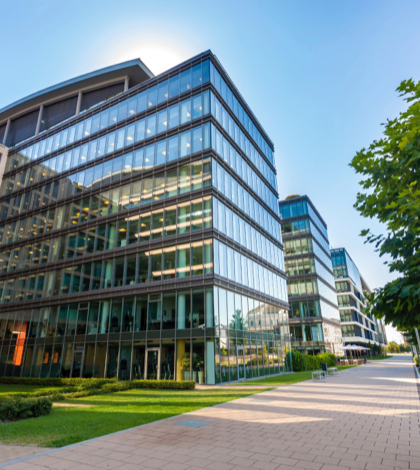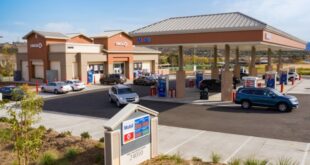Latest numbers shows things are improving, but at a slow pace. Speculative development is probably not on the horizon.
The Inland Empire office market is coming back.
Not very quickly, but it is coming back.
That’s the conclusion of Newmark Grubb Knight Frank, one of the first of the major real estate brokerages to release its second quarter report for 2015 on the office market in Riverside and San Bernardino counties.
The headline on the five-page report declares that the momentum built up within the two-county region’s office market during the first quarter is still in place heading into the second half of the year.
It notes that 13,607 square feet of office space was absorbed during the second quarter of 2015, a figure it calls “modest, yet positive.” Most of that absorption happened in Class B office space, not the more lucrative Class A category.
The report also notes that the region’s vacancy rate during the second quarter was 15.3 percent, down 10 basis points compared with May and down 150 basis points – a basis point is equal to one one hundredth of a percentage point – year-over-year.
Good new also on lease rates, which have moved up and down in the Inland Empire during the last four years. After a slight drop in the first quarter, lease rates were up 2.5 percent in the second quarter, to $1.62 a square foot, according to Newmark Grubb Knight Frank.
The report also stated that the Inland region has missed only one quarter of positive net absorption during the last four years, with occupancy gains during that times totaling more than 2.3 million square feet.
Since the middle of 2011, office vacancy in the Inland Empire has fallen from 24 percent to it current level of 15.3 percent, a solid though hardly a spectacular decline, the report stated.
CBRE Group Inc. took a similar view of the Inland office market during April, May and June of this year. Vacancy was 15.4 percent, net absorption was 11,258 square feet and the average lease rate was $1.77 a square foot.
The report described the Inland office market as “fairly positive” during the second quarter. It also singled out the Ontario and Rancho Cucamonga for having newer office buildings that have yet to be fully absorbed into the market, and for having lower lease rates than some office properties in Riverside, which remains the Inland Empire’s primary office market.
“The market is getting better,” said Vindar Batoosingh, senior vice president with CB Richard Ellis Ontario and an office specialist. “The absorption rate is good, velocity is good, but there are still a lot of deals that have not kicked in. We should have very strong absorption numbers by the end of the year.”
Colliers International reported that office vacancy in the Inland Empire rose from 16 percent in the first quarter to 16.8 percent in the second quarter, down 240 basis points from the vacancy rates reported during the second quarter of 2015.
Net absorption was minus 173,400 square feet, compared with 206,300 square feet of positive net absorption during the first quarter. Only two submarkets – Temecula-Murrieta at 18,700 square feet and Ontario at 3,300 square feet – experienced positive net absorption during the second quarter, Colliers found.
Lease rates rose slightly during the second quarter, to $1.69 a square foot, although Colliers International noted that office lease rates in the Inland Empire have been “relatively flat” during the past two years, moving up or down only two cents during each quarter.
The large negative absorption relates to Southern California Edison’s departure from a 149,372-square-foot building in early June in Rancho Cucamonga, a move that might have happened after other brokerages completed their second-quarter research, said Caitlin Matteson, research director with Colliers Los Angeles.
That property remains vacant, but one major move does not change the overall market very much, Matteson said.
“[Businesses] are moving in and moving out, but the [Inland] market remains strong as it moves forward,” said Matteson, who was in charge of compiling the second quarter office report. “The Inland Empire market is a lot like Southern California. Lease rates are getting higher and vacancy is dropping.”
The Inland office market may be improving but it still has a long way to go, regional economist John Husing said.
“The market is coming back, it’s just not coming back as fast as some people would like it to,” Husing said. “But it will continue to get better, because the residential market will continue to get better, and so much of the office market is tied to the residential market.”
Husing, who has been studying the Inland Empire economy for about 50 years, says he looks at the most recent four quarters when charting economic trends, believing that looking back that far presents a more accurate picture than three months.
“Things can get distorted if you only look at one quarter, so I look at four quarters running,” Husing said. “In this case that would be the third and fourth quarters of 2014 and the first two quarters of this year. If you look at our office numbers during that time, most of what you see is pretty good.”
The market has experienced positive net absorption during that time, and vacancy has held steady at around 15 percent after peaking at 22 percent in early 2011.
“We’re 50,000 square feet above where we were in 2007, before the recession hit,” Husing said. “So it’s a growing market, but it’s growing slowly.”
Assuming that the absorption and vacancy numbers stay strong, the next major milestone will be when a developer decides to build a speculative office project in the Inland region.
With so much empty space still available because of the recession, don’t look for that to happen soon.
“They [developers] got burned so bad in the last downturn that I don’t think they’re going to be anxious to get back into this market,” Husing said. “The vacancy rate
will have to get below 10 percent, and that’s not going to happen for awhile.”
 IE Business Daily Business news for the Inland Empire.
IE Business Daily Business news for the Inland Empire.


